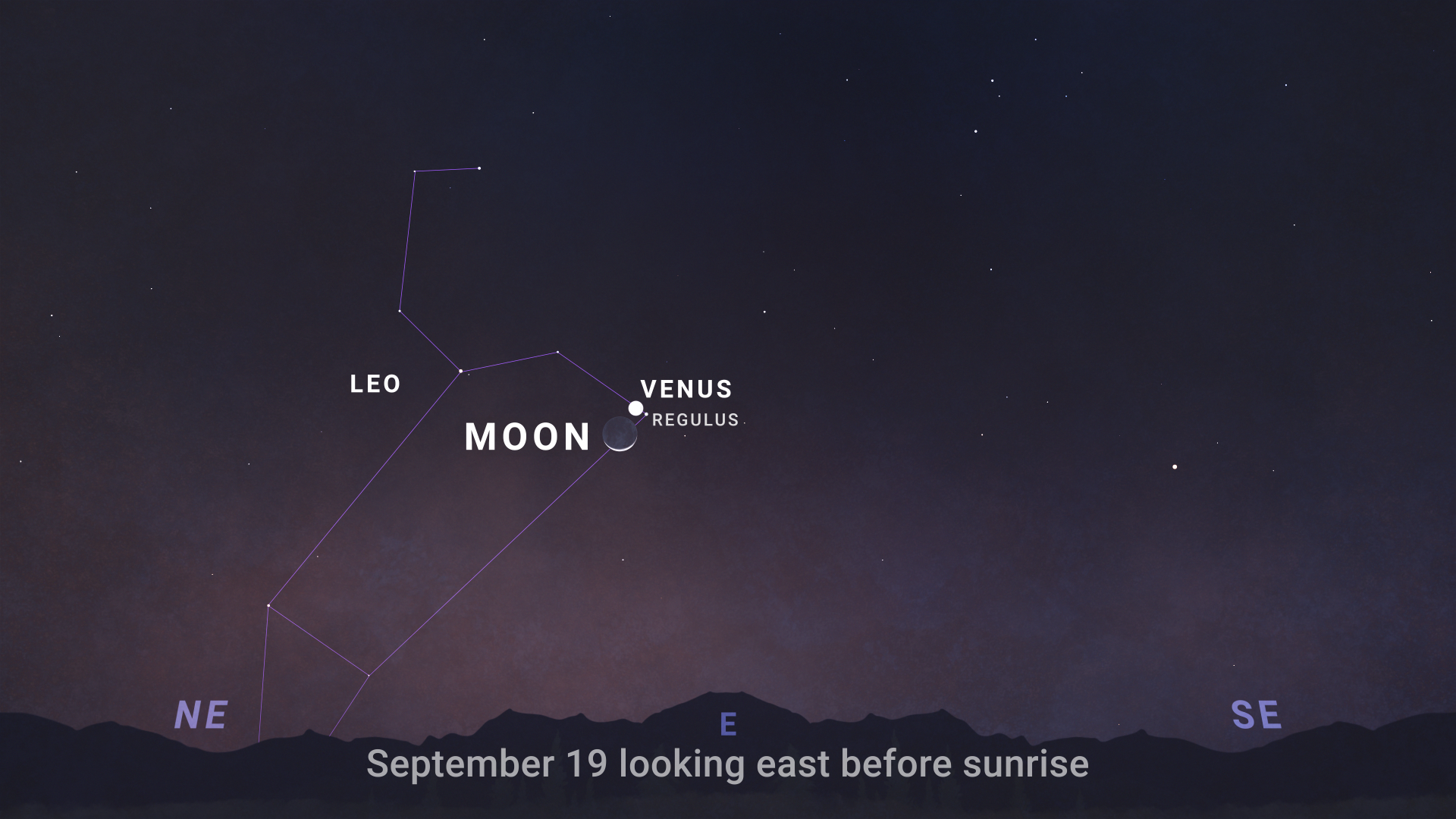Physical Address
304 North Cardinal St.
Dorchester Center, MA 02124
Physical Address
304 North Cardinal St.
Dorchester Center, MA 02124
The month of September has always been special for skywatchers, but in 2025 it brings even more wonders. Throughout the month, the night sky will feature several rare celestial events that will fascinate both astronomers and the general public. One of the most remarkable of these is set for the morning of September 19, when the Moon, Venus, and Regulus Conjunction will appear close together in the sky. This beautiful conjunction will be easily visible to the naked eye and will remain an unforgettable experience for anyone who observes it.
On this special morning, if you look toward the eastern horizon, you will see a breathtaking sight. The Moon will appear as a delicate crescent, glowing faintly in the pre-dawn sky. Near it, the bright planet Venus will shine brilliantly, while slightly apart the star Regulus, the brightest star of the Leo constellation, will also be visible. Together, these three celestial bodies will form a triangular pattern, known in astronomy as a conjunction.
A conjunction occurs when two or more celestial bodies appear very close together in the sky from Earth’s perspective, even though in reality they may be millions of kilometers apart. It is a phenomenon that demonstrates how our view of the cosmos is shaped by relative positions and perspective.
This rare spectacle will be visible just before sunrise. As the first light of dawn spreads across the sky, the trio of the Moon, Venus, and Regulus will appear at their brightest. The best time to observe will be between 4:30 a.m. and sunrise.
To enjoy the view, choose a location with a clear eastern horizon—such as an open field, rooftop, or balcony free from obstructions. In areas with low light pollution, the sight will appear even sharper and more beautiful.
This event is noteworthy not only for its beauty but also for its astronomical significance. In this rare alignment, Moon Venus and Regulus Conjunction will shine together in a natural harmony that is easy to observe.
Together, these three objects will create a moment of awe that is both scientifically significant and visually enchanting.
You don’t need special instruments to observe this conjunction—it will be clearly visible with the naked eye. However, if you have a small telescope or binoculars, the sight will be even more mesmerizing. With magnification, you can notice the details of the Moon’s crescent and the surrounding glow of Venus more vividly.
While the morning of September 19 is the highlight, the entire month is packed with celestial events:

From a scientific perspective, conjunctions are valuable for studying the motions of planets and stars, as well as for encouraging public interest in astronomy. For enthusiasts and casual skywatchers, these events are opportunities to connect with the cosmos and appreciate the wonders beyond our planet.
On the morning of September 19, the combined brilliance of the Moon, Venus, and Regulus will light up the dawn sky in a way that few events can match. This celestial gathering will last only a few hours, but the memory will remain vivid. Whether you are a dedicated astronomer or someone who simply enjoys gazing at the stars, this rare alignment is not to be missed.
Reference : What’s Up: September 2025 Skywatching Tips from NASA
Read this article in hindi : 19 सितंबर की सुबह आकाश में दिखेगा चाँद, शुक्र और रेजुलस का संगम | Moon Venus and Regulus